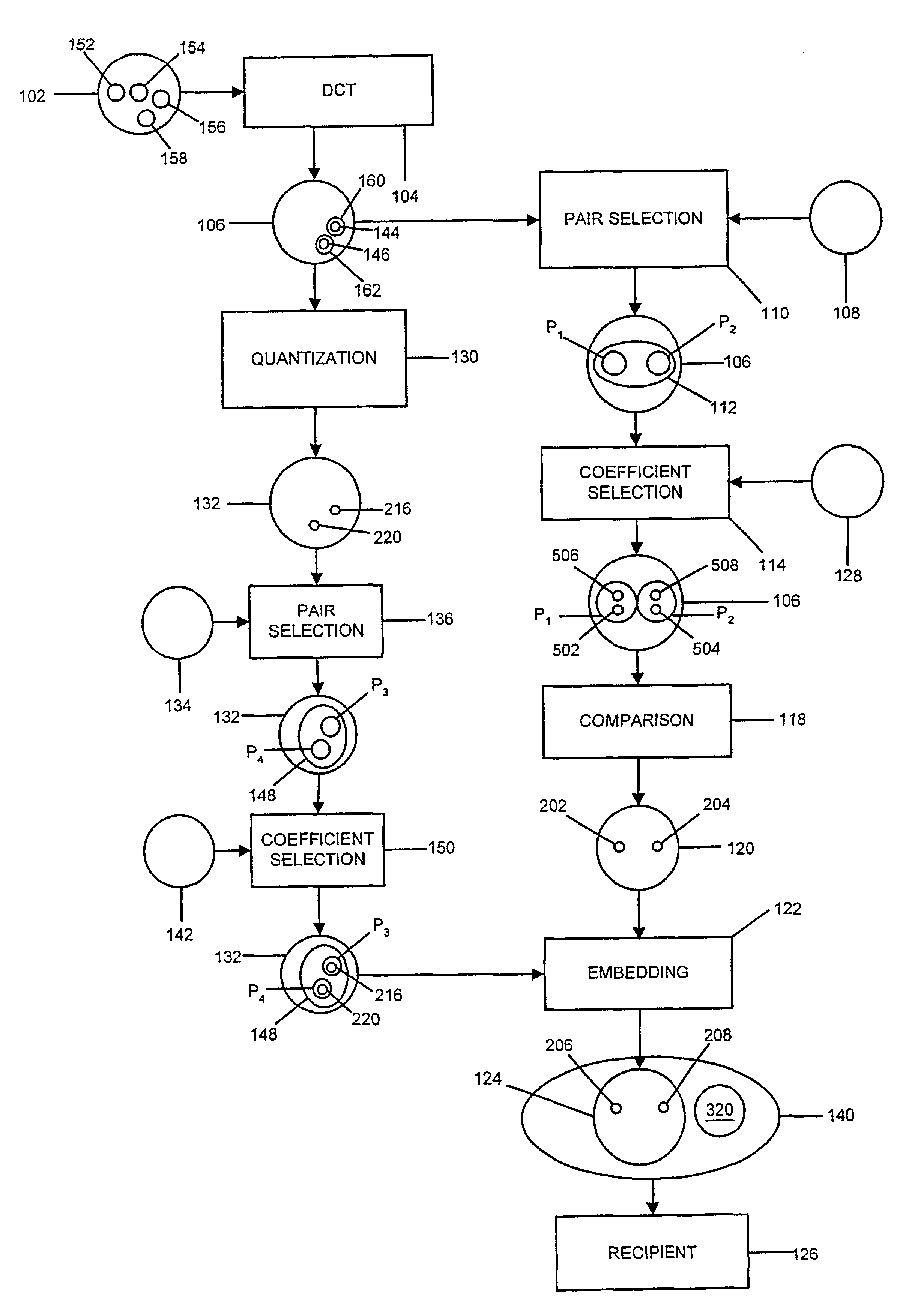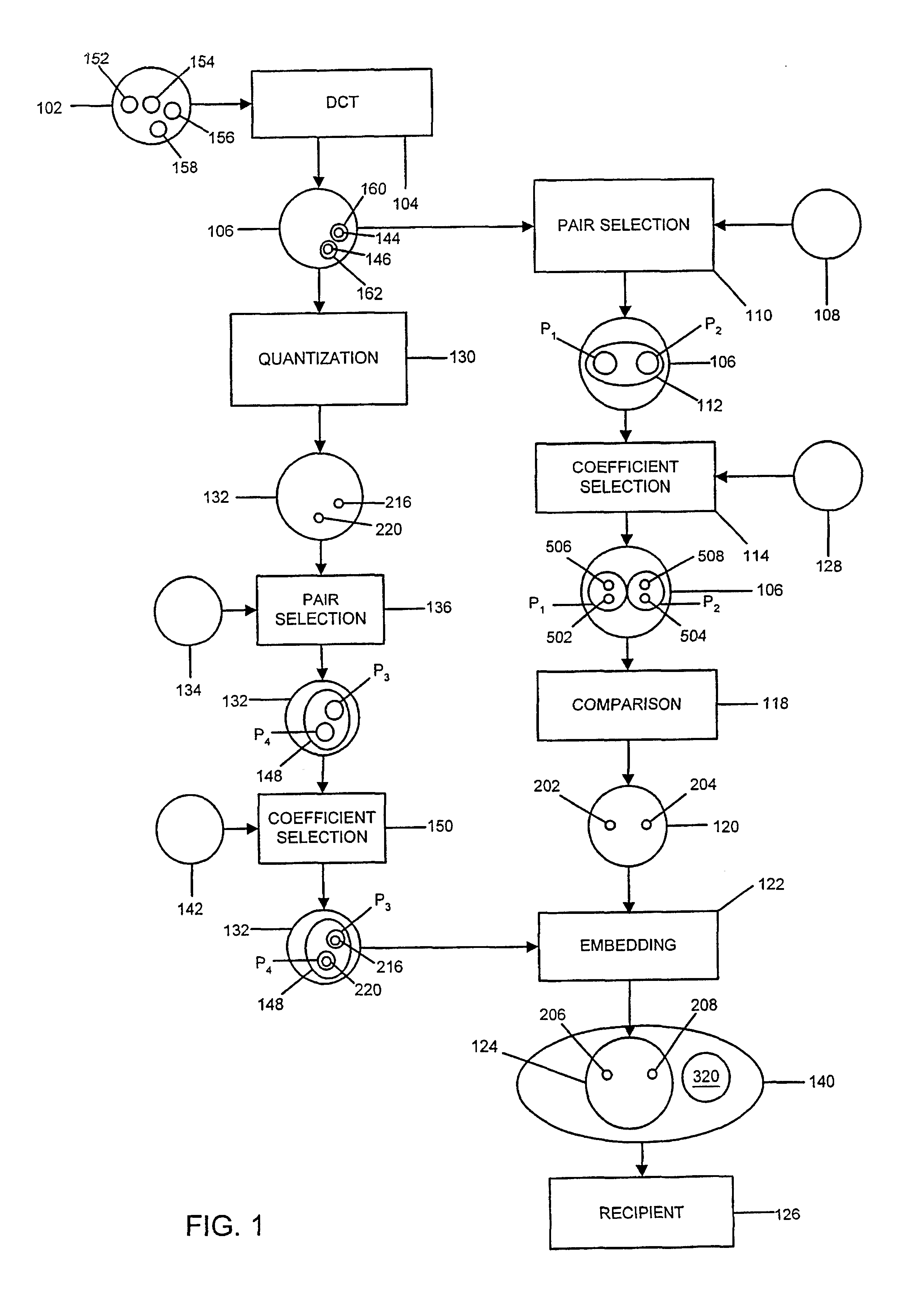Method and apparatus for watermarking images
a technology for watermarking images and images, applied in image watermarking, television systems, instruments, etc., can solve problems such as improper removal of objects, unsuitable conventional digital signature watermarking techniques, and digital images that are vulnerable to tampering
- Summary
- Abstract
- Description
- Claims
- Application Information
AI Technical Summary
Benefits of technology
Problems solved by technology
Method used
Image
Examples
Embodiment Construction
In accordance with the present invention, authentication data are generated and embedded as watermark codes in an image in order to enable later authentication of the watermarked image and / or images derived from the watermarked image. The authentication data are derived from the image in which they are to be embedded. FIG. 1 illustrates an exemplary procedure for generating such authentication data and embedding the authentication data in an image. The original, spatial domain image data 102 is processed using a domain transformation procedure for converting the spatial domain image data 102 into transformed-domain image data 106. In the illustrated example, a discrete cosine transform (DCT) 104 is used to process the spatial domain data 102, in order to derive DCT data 106. The spatial domain data 102 are typically divided into 8×8 blocks. Each 8×8 block of spatial domain data is separately processed by the DCT procedure, to generate an 8×8 block 402 of DCT coefficients, as illustr...
PUM
 Login to View More
Login to View More Abstract
Description
Claims
Application Information
 Login to View More
Login to View More - R&D
- Intellectual Property
- Life Sciences
- Materials
- Tech Scout
- Unparalleled Data Quality
- Higher Quality Content
- 60% Fewer Hallucinations
Browse by: Latest US Patents, China's latest patents, Technical Efficacy Thesaurus, Application Domain, Technology Topic, Popular Technical Reports.
© 2025 PatSnap. All rights reserved.Legal|Privacy policy|Modern Slavery Act Transparency Statement|Sitemap|About US| Contact US: help@patsnap.com



